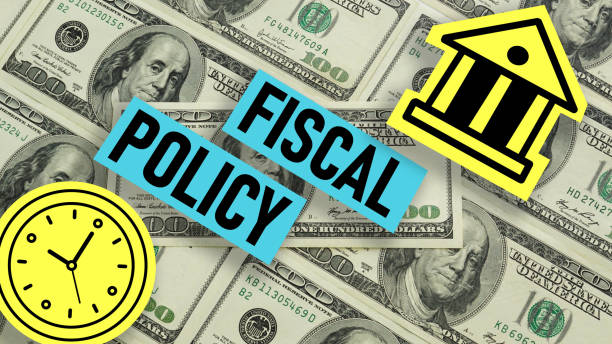Decoding Fiscal Policy: The Strategic Dance of Government Spending and Taxation
In the realm of economic governance, fiscal policy is a crucial instrument wielded by governments to influence and stabilize the economy. This strategic framework encompasses the government’s decisions on spending and taxation, aiming to steer economic performance and address various financial challenges. Let’s delve into the essence of fiscal policy, its mechanisms, and its significance in shaping modern economies.
What is Fiscal Policy?
Fiscal policy is the approach through which a government uses its budgetary powers—spending and taxing—to impact the broader economy. It is a key tool for achieving macroeconomic goals, including:
- Stimulating Growth: Using increased spending or tax cuts to boost economic activity.
- Controlling Inflation: Reducing spending or raising taxes to prevent excessive inflation.
- Fostering Employment: Promoting job creation through targeted fiscal measures.
- Managing Debt: Ensuring that government borrowing remains sustainable by adjusting fiscal policies.
How Does Fiscal Policy Work?
Fiscal policy operates through two primary mechanisms: Government Expenditure and Taxation.
- Government Expenditure: This includes investments in infrastructure, public services, and other critical areas. By ramping up spending, governments can stimulate economic demand and job creation. Conversely, reducing expenditures can help manage inflationary pressures and prevent an overheated economy.
- Taxation: Changes in tax rates affect consumer spending and business investment. Lower taxes can increase disposable income, potentially boosting consumption and investment. Conversely, higher taxes can reduce demand and help manage inflation.
Fiscal Policy Approaches:
Fiscal policy is generally categorized into two main strategies:
- Expansionary Fiscal Policy:
Implemented during economic downturns or recessions, this approach involves increasing government spending and/or reducing taxes to spark economic activity and job growth. For instance, during the 2008 financial crisis, many countries adopted stimulus packages to kickstart their economies. - Contractionary Fiscal Policy:
Applied when the economy is overheating and inflationary pressures are high. This strategy involves cutting government spending and/or raising taxes to cool down the economy and control inflation. An example is the austerity measures seen in Europe during the Eurozone crisis.

The Impact of Fiscal Policy on Economic Stability:
Fiscal policy plays a crucial role in maintaining economic equilibrium. It functions as a counter-cyclical tool, meaning it counteracts the fluctuations of the economic cycle. During recessions, fiscal policy can provide essential support to revitalize the economy, while during periods of economic boom, it can help prevent overheating.
Automatic Stabilizers are integral to fiscal policy. These mechanisms, such as unemployment benefits and progressive taxes, automatically adjust to economic conditions, providing a stabilizing effect without the need for new legislation.
Challenges in Implementing Fiscal Policy:
Despite its importance, fiscal policy faces several challenges:
- Debt Management:
Persistent use of expansionary fiscal policies can lead to higher government debt. Managing this debt responsibly is crucial to avoid long-term financial instability. - Political Influences:
Fiscal decisions are often subject to political considerations, which can sometimes result in policies that prioritize short-term gains over long-term economic stability. - Timing and Efficacy:
The effects of fiscal policy changes may not be immediate, and their effectiveness can vary. Accurate forecasting and timely implementation are essential to achieving desired outcomes.
The Evolution of Fiscal Policy:
As global economic conditions change, so too does the approach to fiscal policy. Emerging issues such as climate change, technological advancements, and demographic shifts are reshaping fiscal strategies. Governments are increasingly focusing on Sustainable Fiscal Policies that incorporate environmental considerations and Equitable Growth strategies to address income disparities.
In summary, fiscal policy remains a fundamental aspect of economic management, wielding significant power to influence a nation’s financial health. By adeptly adjusting spending and taxation, governments can navigate economic fluctuations, foster growth, and maintain stability. As we move forward, the evolving landscape of fiscal policy will need to address both traditional and emerging economic challenges, ensuring its continued relevance and effectiveness in the complex world of economic governance.
FAQs:
1. What is Fiscal Policy?
- Answer: Fiscal policy encompasses the strategies that governments use to influence economic activity through their spending and tax policies. By adjusting these levers, fiscal policy aims to manage economic growth, control inflation, and impact employment levels.
2. How does Fiscal Policy influence the economy?
- Answer: Fiscal policy affects the economy by altering aggregate demand. Government actions such as increasing spending or reducing taxes can boost economic activity, while decreasing spending or raising taxes can help manage inflation and prevent economic overheating.
3. What are the primary tools of Fiscal Policy?
- Answer: The main instruments of fiscal policy are Government Spending and Taxation. Government spending involves allocating funds to various public services and infrastructure projects, while taxation involves adjusting tax rates to influence economic behavior and fund government activities.
4. What distinguishes Expansionary Fiscal Policy from Contractionary Fiscal Policy?
- Answer: Expansionary Fiscal Policy is used to stimulate economic activity during slowdowns by increasing government spending or cutting taxes. In contrast, Contractionary Fiscal Policy aims to slow down an overheating economy by reducing spending or increasing taxes to control inflation.
5. What are Automatic Stabilizers in the context of Fiscal Policy?
- Answer: Automatic stabilizers are built-in economic mechanisms that automatically adjust to economic fluctuations. Examples include unemployment benefits and progressive tax rates, which help moderate economic cycles without the need for new legislation.
6. How does Fiscal Policy affect national debt?
- Answer: Frequent use of expansionary fiscal measures, such as increased spending and reduced taxes, can lead to higher government debt. Effective management of this debt is essential to ensure long-term economic health and avoid placing excessive financial strain on future generations.
7. What are some challenges in implementing Fiscal Policy?
- Answer: Key challenges include Debt Management: balancing budgetary spending with sustainable debt levels; Political Influences: navigating political pressures that may lead to less effective policy decisions; and Timing and Effectiveness: addressing the lag between policy implementation and its economic impact.
8. How does Fiscal Policy interact with Monetary Policy?
- Answer: Fiscal policy involves decisions on government spending and taxation, while monetary policy, managed by central banks, focuses on controlling money supply and interest rates. Both policies aim to influence economic conditions but operate through different mechanisms and entities.
9. Can Fiscal Policy be used to reduce income inequality?
- Answer: Indeed, fiscal policy can help mitigate income inequality through measures such as progressive taxation and targeted spending on social services. By adjusting tax structures and investing in programs like education and healthcare, governments can work to narrow economic disparities.
10. What role does Fiscal Policy play in economic recovery?
- Answer: During periods of economic downturn, fiscal policy is crucial for recovery. By increasing government spending and offering tax relief, fiscal measures can stimulate demand, create jobs, and support overall economic revitalization.
11. How does Fiscal Policy impact businesses and consumers?
- Answer: Fiscal policy affects businesses and consumers by modifying tax rates and government spending. Tax reductions can increase disposable income for consumers and lower costs for businesses, while government investment in public infrastructure can boost business opportunities and consumer spending.
12. What are some recent examples of Fiscal Policy measures?
- Answer: Recent fiscal policy examples include the stimulus packages enacted to address the economic impact of the COVID-19 pandemic. These measures included direct economic relief payments, enhanced unemployment benefits, and financial support for small businesses to help stimulate economic recovery.




